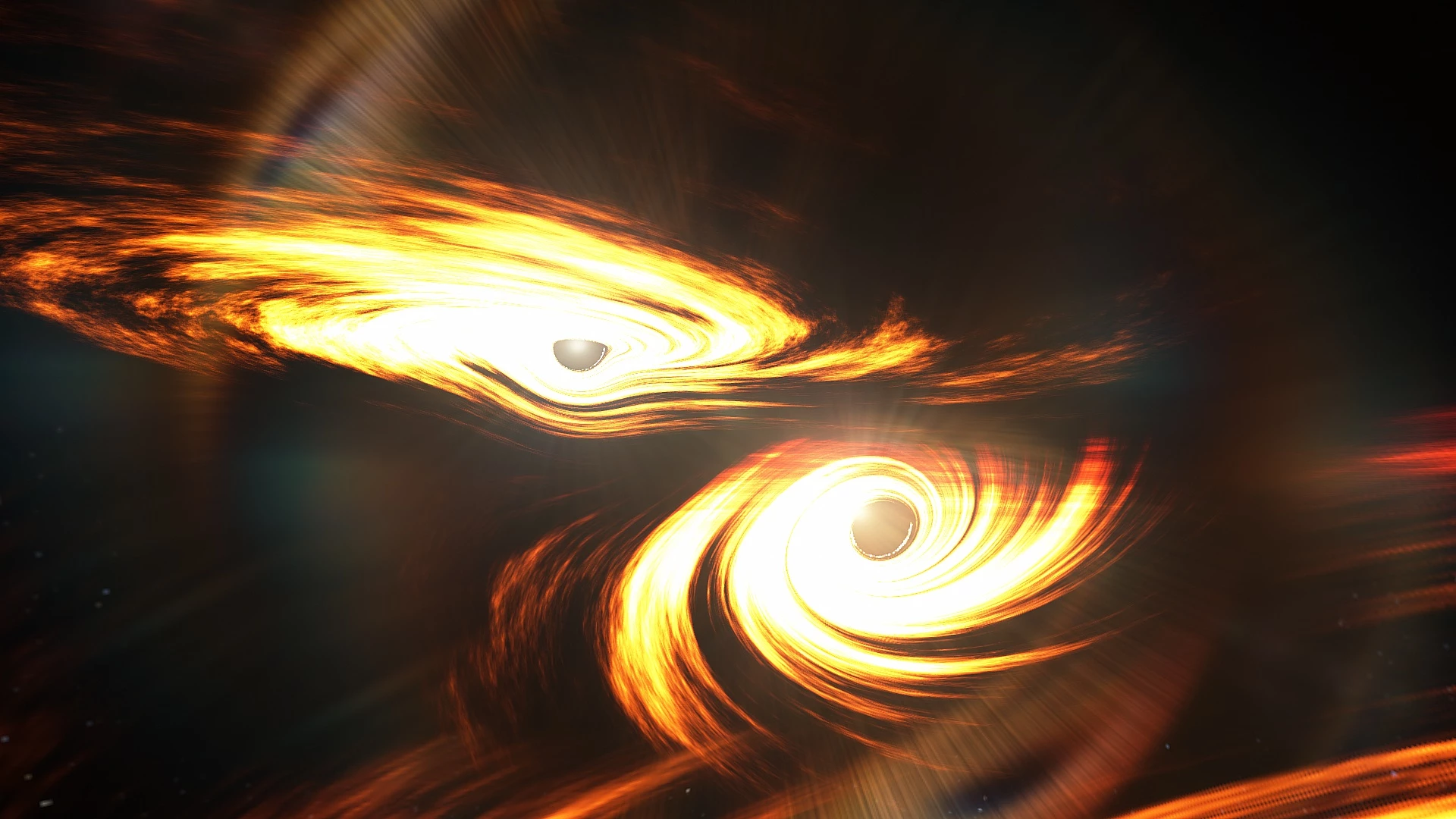The LIGO and Virgo Scientific Collaboration has detected gravitational waves coming from the most massive black hole collision that it's ever recorded. The end result created a gargantuan black hole that belongs to a new class.
A century-long treasure hunt instigated by Einstein finally came to an end in 2015, when LIGO detected gravitational waves for the very first time. These ripples in the very fabric of space and time are created by some of the most powerful cataclysms in the cosmos, usually when black holes or neutron stars collide. In the five years since, LIGO and other facilities like Virgo have detected dozens of gravitational wave signals. And now, the Collaboration has picked up a signal from a gigantic collision that created a new black hole more than twice the mass of any other ever detected through gravitational waves.
The signal, known as GW190521, was detected on May 21, 2019, taking the shape of four short wiggles that lasted less than a tenth of a second. It appears to have been the shockwaves of a collision that took place some six billion years ago, between two black holes with masses of around 65 and 85 times the mass of the Sun. The remnant black hole that formed as a result has a mass of 142 times the Sun, and the missing eight solar masses was converted to energy and carried away as the gravitational waves.
That means that all three black holes involved – the two progenitors and the result of the merger – were much more massive than any others detected through gravitational waves so far. The previous record was an event called GW170729, which saw black holes of 50 and 34 solar masses collide to create a remnant black hole of 80 solar masses.

But this massive collision isn’t just a new number for the chart – it actually raises several fundamental questions about black holes. Specifically, the remnant falls right into a “mass gap” where black holes normally aren’t found.
Black holes as we know them generally fall into two categories: there are stellar mass black holes, which have masses of between about five and several dozen solar masses. And then there are supermassive black holes, with masses of millions or even billions of Suns. That leaves quite a wide gap in the middle.
Astronomers have hypothesized that there might be intermediate mass black holes (IMBHs) lurking in this gap, with masses between about 100 and 10,000 solar masses. And while some evidence of these middleweights has been found in the past, their existence is still yet to be confirmed. With the mass of 142 Suns, this new remnant falls firmly into IMBH territory, and these gravitational waves represent the best evidence of them to date.
But it’s not the only oddity: at 85 solar masses, the larger of the two black holes that collided was also too big to have formed from a star going supernova. Instead, the scientists suggest that it had also gobbled up several smaller black holes in the past.
“These ‘impossibly’ massive black holes may be made of two smaller black holes which previously merged,” says Simon Stevenson, a researcher on the team. “If true, we have a big black hole made of smaller black holes, with even smaller black holes inside them – like Russian Dolls.”
This scenario suggests a possible mechanism for how the supermassive black holes form. Stellar mass black holes may just keep colliding over millions and billions of years, growing bigger and bigger until they have enough mass to hold entire galaxies together.
“This is a huge step towards understanding the link between the smaller black holes that have been seen by gravitational-wave detectors and the massive black holes that are found in the center of galaxies,” says David Ottaway, co-author of the study.
Two studies on the findings were published in the journal Physical Review Letters and Astrophysical Journal Letters. The findings are explained in the video below.
Sources: Vanderbilt University, OzGrav, LIGO




